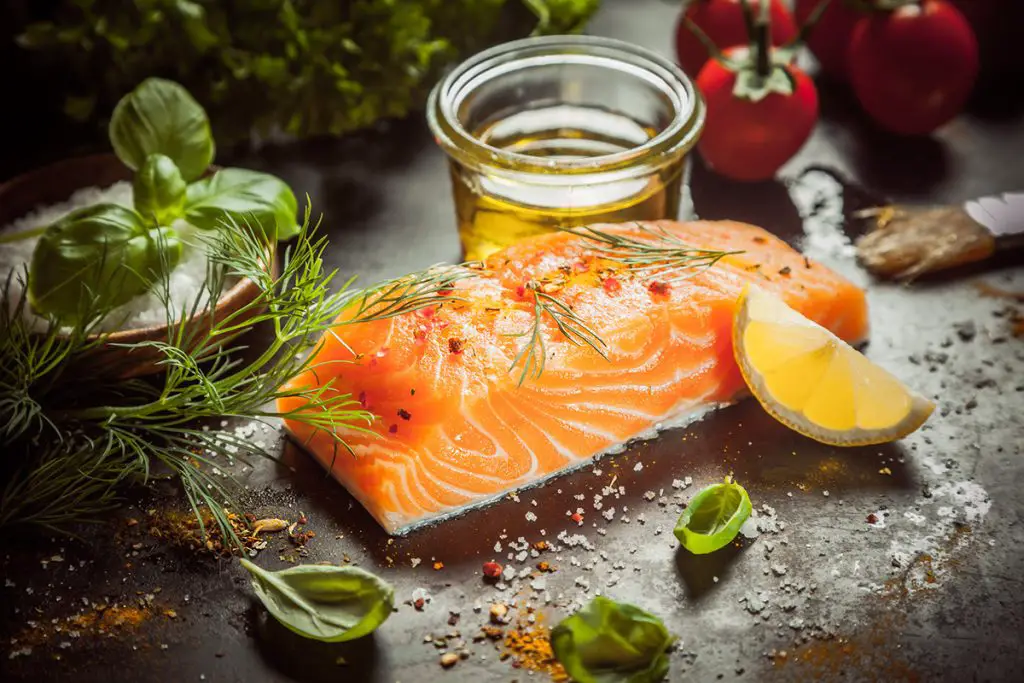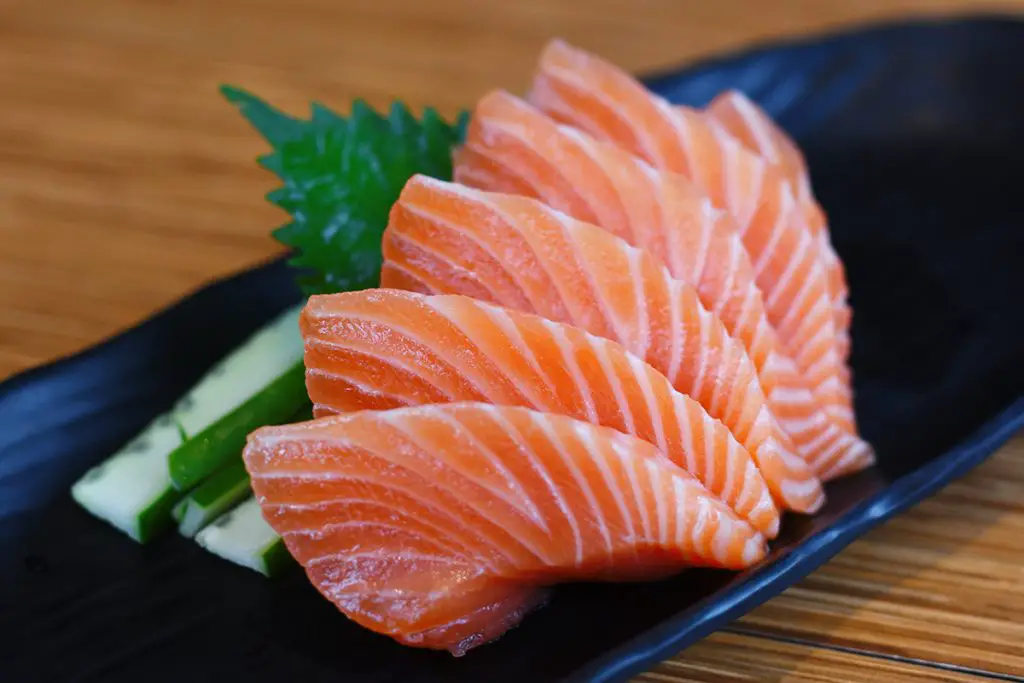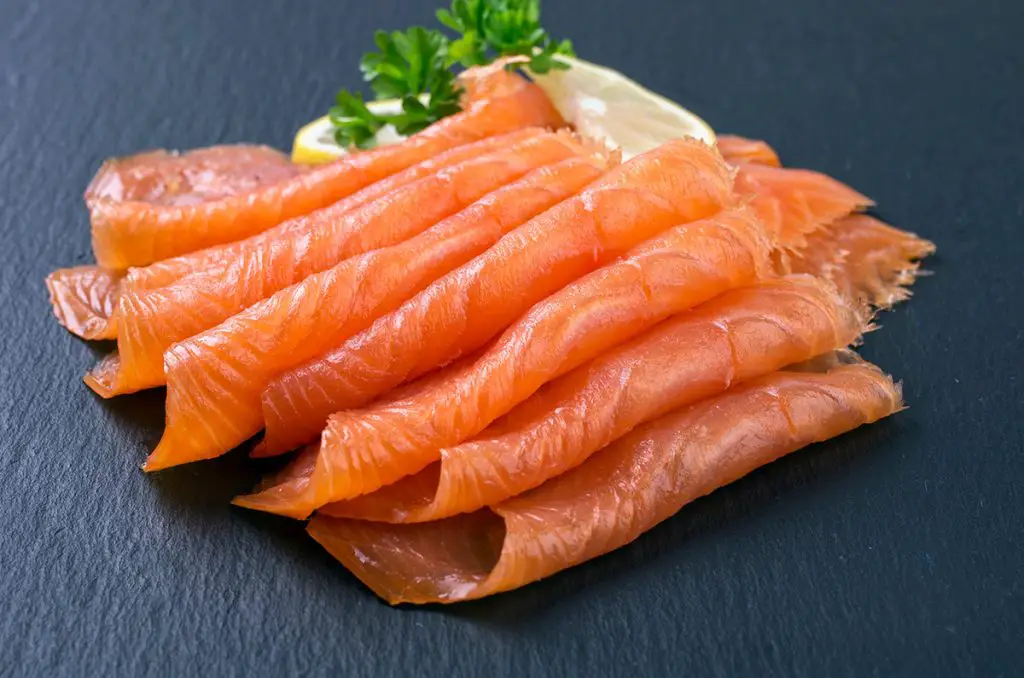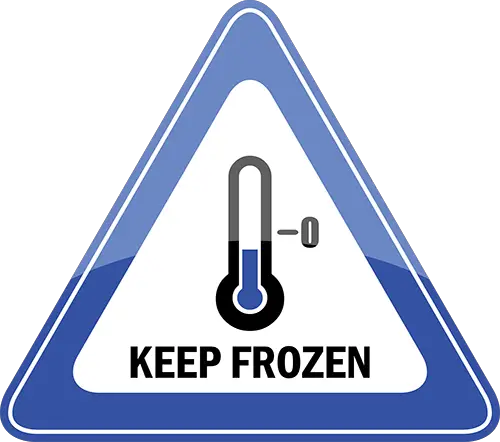Freezing Salmon The Right Way (3 Easy Steps)
Everybody loves salmon, or at least many people do. There are many recipes to use salmon with, and versatility is attractive. But what happens when you want to save it for later; can you freeze salmon?
You can safely freeze salmon, both fresh and smoked. Salmon will keep well in the freezer for three to six months. Beyond this time period, frozen salmon will begin to deteriorate and the taste and quality will be affected.
There are many factors to consider before freezing salmon, including the freshness of the fish when you purchase it. This article discusses all the nuances of freezing salmon and how you can do so effectively in just three basic steps.
Salmon Retains Its Texture and Consistency After Freezing
Over the years, many chefs have doubted the usefulness of frozen salmon compared to fresh. That’s led many of them to avoid cooking with frozen salmon. However, after testing it out for myself, I’ve found that frozen salmon doesn’t get mushy and watery like many other fish varieties.
While it’s true that some fish, like fluke, become mushy and unusable after freezing, that isn’t the case with salmon. Salmon will retain its structural integrity as long as you don’t freeze it for longer than six months. It’s still just as thick, tasty, and healthy as fresh salmon.

So, Why Would You Want To Freeze Salmon?
Like freezing any food, freezing salmon will allow you to keep it for an extended period of time while protecting the fish from harmful bacteria.
While this is undoubtedly true, I mainly freeze salmon because salmon is an expensive fish whose cost is constantly going through large price fluctuations. The price of salmon regularly seems to go sky-high.
So, every time I go to the grocery store, I check the price of fresh salmon.
When I find it on sale or at a reasonable price, I buy a quantity of it. Since my family can’t eat that much salmon all at one time, I freeze it. Freezing salmon is the best way to always have it on-hand at a cost I can afford.
Having said that, there is a right way to freeze salmon for maintaining the best quality and flavor.
How to Freeze Salmon (3 Steps)
1. Ensure You Are Buying Salmon at Its Freshest State
Many people buy salmon that has already begun to deteriorate. With fish, the outcome of the freezing is proportional to the state the fish was in when you first froze it.
Before you buy the salmon, here are a few things to consider:
- Make sure the fish is red and bright. If it is slightly gray or dull, then don’t buy it.
- It would be best if you also poked the fish with your fingers. You will make a dent, but it should pop right back up. If the dent you drive stays a hole and does not pop back up, that indicates mushiness. Salmon that is too soft is undoubtedly on its way to being spoilt.
Ensure you are purchasing your salmon in its freshest state. Otherwise, there’s little that freezing can do.
To help the salmon retain the freshness on the trip home, I always go to the market with a cooler. I add ice (or ice blocks) to the cooler before I leave home to cool it down on the way to the store. Then, after shopping, I place my fresh salmon in the ice chest along with any other perishables I’ve purchased.
This really helps to keep the salmon in good condition. Particularly during the hot summer months.
2. Next, Determine the Cut of the Salmon
Salmon, once thawed, cannot be refrozen. You only get one shot at freezing the salmon, and you have to do it right. The old maxim goes, ‘sharpen your ax.’ If you’re keeping fish in the freezer for a long time, it is in your best interests to do some prep work.

You need to consult your cookbook and determine the recipes you want to cook with the salmon ahead of time. There are usually four ways you could go.
- The first cut is ‘dressed salmon’, where you remove the gills. About 350 grams (12.34 ounces) typically serves one person.
- Next up, we have the ‘pan-dressed’ cut, which involves removing the head, tail, fins, and scales. Approximately 175 grams to 250 grams (6.17 to 8.18 ounces) typically serves one person.
- You can also cut a steak, which refers to cross-section slices of a big fish. For this cut, 175 grams to 250 grams (6.17 to 8.18 ounces) will serve one person.
- Everybody loves filets, which you cut from the side. With filets, 175 grams (6.17 ounces) will serve one person. This Kastking Filet Knife is ideal for cutting filets and deboning the fish. It is available on Amazon, and the value for money is ridiculous.
You’ll now need to cut your salmon into the desired shape and size for the dishes you plan to make.
3. Package Each Cut of Salmon Into a Freezer Bag
You can’t just chuck the salmon into the freezer. It would help if you got an airtight bag such as a freezer-safe Ziploc. You could also use a vacuum sealer. Just ensure that the bag is airtight. Then, put each cut of fish inside its own bag, press out as much air as you can, and close it tightly. Once you’ve done this, you are ready to freeze.
For even better results, you can pat down on the wet salmon and put three slices of freshly cut lemon on top. Then wrap tightly into the bag.
I’ve just described the most widely accepted way of freezing salmon. You can try other methods, especially if you don’t have a vacuum sealer or freezer bag.
Layer Wrapping Is One Alternative Method of Freezing Salmon
Wrap the salmon in a newspaper or paper towel. Then pat it with some water. Next, wrap it in an extra layer, but make it a plastic bag this time. Finalize things by introducing aluminum foil to the mix, and you have a good layer of wrapping ready to be frozen.
You Could Also Use the Glazing Method To Freeze Salmon
Glazing is especially useful to prevent freezer burn, and it involves using a thin layer of ice to store foods such as chicken and fish.
- Since salmon is a fatty fish, you’ll need to dip it inside an ascorbic acid solution. The pretreatment is necessary for glazing to be successful. You can purchase this Pure Ascorbic Acid from Amazon. It is made specifically for preserving food. It is kosher, gluten-free, and vegan.
- Next up, put the fish on parchment paper and a baking tray an put it in the freezer until it is completely frozen. Once the cuts of salmon are solidly frozen, take them out and dip them in ice water.
- Then, put them back in the freezer. Repeat this process until a thin layer of ice is formed around the fish.
Here’s a more detailed guide from the National Center for Home Food Preservation.
How to Thaw Frozen Salmon
As we mentioned at the beginning of this guide, many people assume that freezing salmon will impact the quality. However, the opposite is true. You can freeze salmon for three to six months without fear.

However, you’re probably wondering how to thaw it once you’ve frozen it.
As we mentioned earlier, you can’t refreeze salmon. So be sure to only take the portion you want to prepare out of the freezer.
The thawing of salmon starts 12 to 48 hours before you intend to prepare it. First, you will need to take the desired portion out of the freezer and place it in the refrigerator. Doing this allows the defrosting process to happen at a slow rate. Slowly defrosting salmon is the key to preserving its texture.
Alternatively, you can thaw salmon with some cold tap water if you are short on time. All you have to do is put it in a new plastic bag and dip it into a bowl of cool tap water. Do not attempt to use hot water, as this can lead to bacteria growth.
Every 15 minutes, change the water until the salmon completely defrosts. It should take just one hour to defrost, and the plastic bag will help to ensure that it thaws evenly. Be sure to cook it immediately.
Finally, you could use the microwave method for a speedy defrost. However, the downside is that there’s a very high chance of uneven thawing. But if you must, take the salmon out and put it on a paper towel. Ensure that you set the thinnest part of the fish in the middle – to ensure even thawing.
Put the microwave on its defrost setting and set the timer to five minutes per pound. Let it run for two and a half minutes, then flip it. Continue until you are satisfied.
The microwave is not an ideal way to thaw salmon, but it will work in a pinch.
Wrapping Up
Know you know you can safely freeze salmon for up to six months without having to worry about sacrificing its quality. You also know the exact steps to follow to freeze salmon successfully.
Hopefully, this guide has been helpful!





